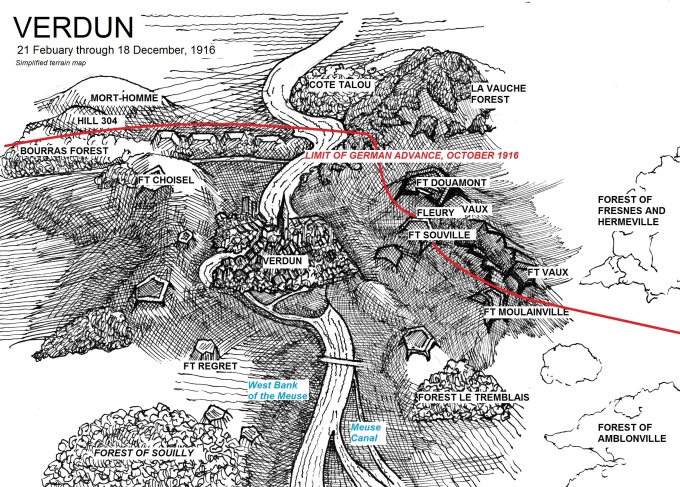Nick Richwagen

Project Description
This is an ongoing project to complement my reading of John Keegan’s The First World War (2000), as well as Michael Howard’s The First World War: A Very Short Introduction (2003). I have also made use of other literature and resources throughout the project (see Useful Resources below).
Every year 1914-1918 has a paragraph summary detailing the events of each month. This article is for the first half of the conflict, 1914-1916. Each year of the war also has a table, divided into sections for the Western Front, the Eastern Front, the Southern Front/Balkan Campaign and the multiple Turkish Fronts fought against the Ottoman Empire.
Particular attention is spent on the largest battles of the war: Verdun and the Somme (1916), and Passchendaele (1917). The first two of these will be covered here.
1914: The War Begins
The Great War began in July 1914, after decades of military buildup and tension between the great powers of Europe. Conflict was set off by the assassination of Archduke Franz Ferdinand, heir to the throne of Austria-Hungary and nephew of the Austrian Emperor Franz Joseph. In retaliation, Austria-Hungary declared war on Serbia on July 28th. The next day, Austrian forces began shelling Belgrade, the Serbian capital. Alliances between the great powers and the invasion of Belgium brought Germany and Austria-Hungary into conflict with Russia, France, and the United Kingdom by early August.
August
At the start of August, Germany invaded Belgium in order to maneuver around the strong French positions along the Franco-German border. This began the Battle of the Frontiers. Stiff Belgian resistance prevented German forces from invading past the border until late August. Belgian fortresses, most importantly Liege and Namur, held the Germans back until the last fort surrendered on the 17th. French attempts to invade German Lorraine in mid-August ended in utter disaster. Pushing into France, the Germans were able to overwhelm seven French armies as well as the British Expeditionary Force (BEF).
Combat in 1914 often featured field armies maneuvering in open spaces to gain advantage. By the end of the year, this would no longer be a feature of the war on the Western Front.
Continue reading “A Concise Summary of World War I: The First Two Years (1914-1916)”